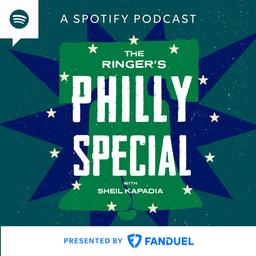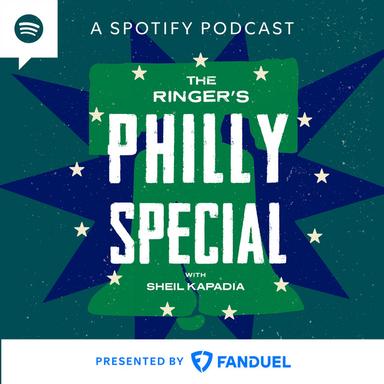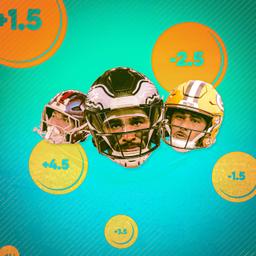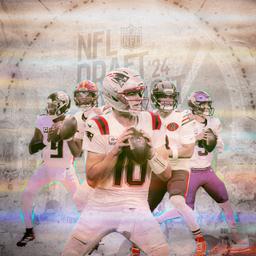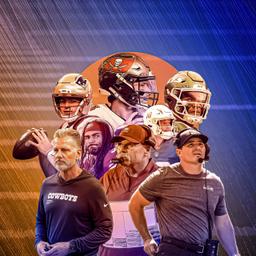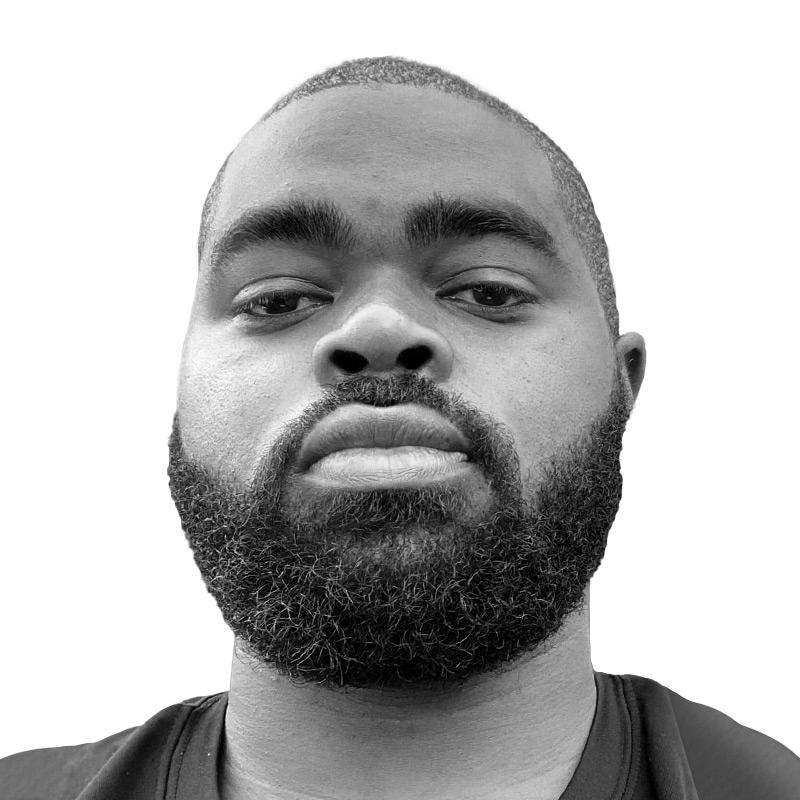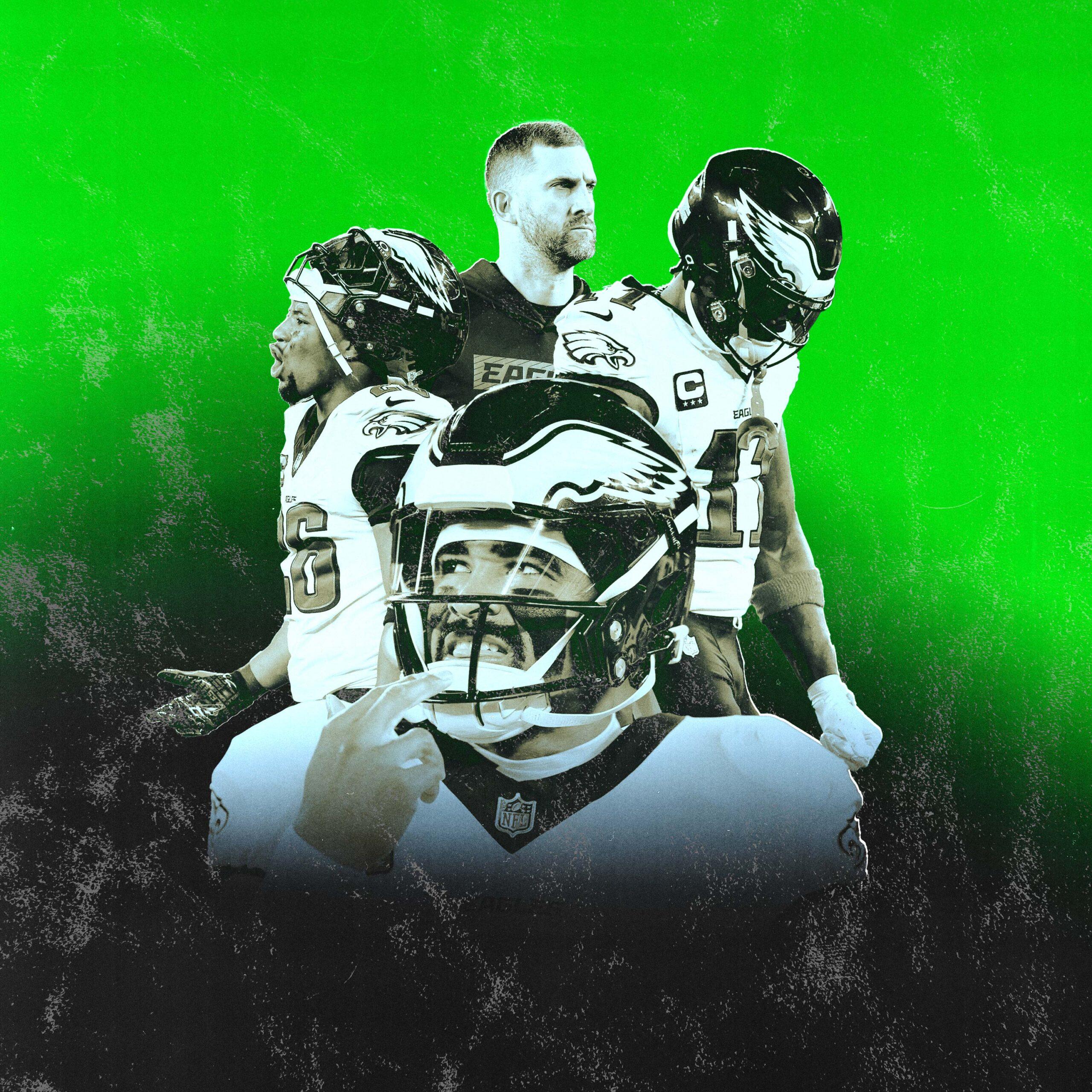
The Philadelphia Eagles are the reigning champs, have a 4-2 record, and currently have the fifth-best odds (+1000 per FanDuel) to win the Super Bowl this season—yet no one is happy with them, especially given their underperforming, deeply flawed offense.
The Eagles have lost back-to-back games for the first time since 2023. Instead of this rare (and short) losing streak providing a moment for this franchise and its fans to reflect upon Philly’s dominance over the league for the past two years, it’s having the opposite effect. There’s real concern that because these consecutive losses were by-products of offensive meltdowns, this season could spiral away just like the 2023 season did. That year, the Eagles started 10-1 and lost six of their final seven games, mostly against inferior competition.
The Eagles’ biggest offensive issue in 2023 was that they ran a far too predictable offensive scheme under former coordinator Brian Johnson, who was one-and-done in that role. Now, under first-year coordinator Kevin Patullo, the Eagles have the same problem again. Entering Week 7, the Eagles are constantly stalling out. They are averaging the third-fewest yards per game and have the second-highest rate of drives ending in a three-and-out. This is an unacceptable result for an offense loaded with pass catchers A.J. Brown, DeVonta Smith, and Dallas Goedert; an elite running back in Saquon Barkley; and a Super Bowl MVP in quarterback Jalen Hurts.
“Maybe we’re too predictable,” Lane Johnson said after last Thursday’s loss to the Giants. “When you look at some of the stuff we did last year [compared to now], the production isn’t matching the talent.”
The foundation of this offense seems to be rotting, but there’s still too much talent on the roster and time in the season to condemn this team outright. After all, the Eagles’ passing game had its issues at times during the 2024 regular season but was able to turn it around by the playoffs. To find a better way forward for the rest of this year, let’s go through the film and identify the failings, whether it’s poor play calling by Patullo or bad execution by that star-studded roster.
Predictability is hurting the Eagles’ passing game, as defenses appear to know what the Eagles will do in any given situation. Take a look at the clip below, an instructive example of what ails the offense. Here, it’s second-and-11 in the Eagles’ Super Bowl loss to the Chiefs in 2023. The Eagles are at their own 24-yard line. Brown is at the top of the screen, and the Eagles are in an empty set, running a high-to-low passing concept—Brown runs a 5-yard in, and Goedert runs a deep out. On the other side of the formation, Philadelphia has a fade route from its slot receiver and a pair of hitch routes. This gives Hurts options against different coverages. If he sees a single-high coverage, he should look at the fade and hitches; if Kansas City uses a two-deep coverage, Hurts should look at Brown and Goedert’s high-low combination.
There’s nothing wrong with this design in theory, and Hurts made the correct read and got the ball out quickly. The problem is the Eagles are doing the exact same thing two years later, but now defenses are ready. Below is a play against the Chiefs in Week 2 of this season. The Eagles have a third-and-9 from their own 32-yard line. Instead of an empty set, the Eagles motion into a spread formation with two receivers on each side. The offense runs the exact same concept we saw in Super Bowl LVII, with Brown and backup tight end Grant Calcaterra, but this time, Kansas City’s defense is all over it with a two-deep coverage shell. Even though Hurts makes the right read and the pass is completed, Brown is brought down short of the sticks.
In the same area of the field, in a similarly obvious passing situation, and against the same defensive coordinator (Steve Spagnuolo), the Eagles are running the same concepts. No one would argue that the Eagles offense should totally divorce itself from things that have worked in the past, but there comes a point when it's no longer acceptable to run something just because it worked before.
It’s clear the Eagles haven’t added enough new layers to the passing game since 2022 to stay ahead of the curve, particularly as defenses have adjusted their coverages specifically to stop Brown, who is on pace for career lows in yards and touchdowns and has been the squeakiest wheel demanding changes to the offense and expressing his desire for a larger share of opportunities. And this isn’t just a 2025 problem. Brown directly pointed out the Eagles’ passing issues late last season as well.
Because of our preconceived notions about diva receivers, it’s easy to read Brown’s comments as a self-centered demand for more targets, but it’s objectively true that Philadelphia’s offense is better when Brown is the focal point of the passing game. Including playoffs, Philadelphia is 15-3 in games where Brown reaches 100 receiving yards and 30-9 in games where he has at least five receptions. But Brown is being targeted only 7.5 times per game so far this season, which is a hair above his career low of 7.46 last year and well below his 2023 mark of 9.29.
The shrinking opportunities for Brown are alarming enough, but his efficiency on those targets has also plummeted to start this season. From 2022 to 2024, the Eagles had an average success rate of 55 percent when targeting Brown. For context, that’s higher than the average success rate for any offense as a whole over that same period. This year, the team’s success rate when targeting Brown has fallen to 42 percent. That’s a massive drop in efficiency, especially for a receiver currently making $32 million a year, and proof that the passing offense is failing.
I wouldn’t lay too much of the blame at Brown’s feet, though. His usage has changed over the past couple of years as part of the offense’s design; his alignment has become more static and his route tree less varied—and that’s out of his control. Brown is almost exclusively an outside receiver in this offense now, aligning in the slot less than half as often as he did in 2022 and 2023. He’s also running more go routes now than at any time in his career (his Tennessee years included), and it’s playing directly into the hands of opposing defenses. Philadelphia is facing less man coverage when Brown is on the field than it has over the past four years, while the rate of Cover 2 and quarters coverage it’s seeing is up (when defenses are more likely to have go routes double-covered). Simply put: Defenses are specifically trying to get help over the top of Brown, yet Philadelphia is stubbornly sticking him outside and running routes to attack a type of coverage that he isn’t getting.
It’s obvious that the league’s defensive coordinators know Brown can’t consistently be stopped in single coverage and that Hurts can throw a beautiful deep ball to Brown when they do get that favorable matchup. In the few instances when Philadelphia can catch a defense in man, we’ve seen glimpses of the explosive passing game that used to define this offense, like in this clip below:
There are ways to feature Brown in a comprehensive passing attack without betraying the simplistic nature of Philadelphia’s passing game, but that means the Eagles will need to move Brown all over the field more often. He can’t be confined to running the bulk of his routes on the perimeter. Moving him around the formation should make it easier for Hurts to identify the defensive coverages and where to go with the ball. Philadelphia can broaden Brown’s route tree simply by varying his alignment instead of building an entirely separate package of plays.
Of course, beyond complaining about it to the media, Brown can’t do much to control where he lines up, the type of coverage he’ll face, or whether the quarterback will look his way when Brown does get man coverage. The brunt of that responsibility falls on Patullo, who designs the scheme and calls the plays, and offensive-minded head coach Nick Sirianni, who should be overseeing the offensive game plan each week. Right now, that plan seems to be limiting downfield chances, as the passing game averages just under nine passes beyond the sticks per game—the third fewest in the league.
Now, in fairness to Patullo, passing against two-deep defenses is difficult in general, no matter how talented your best receiver may be. Still, there is no excuse for the Eagles to currently have the second-worst passing offense in the league against two-deep defenses, especially when the rushing attack is also failing miserably.
More two-deep safety shells typically means lighter boxes. For the Eagles, that means rushing lanes should be open for Barkley and Hurts—but that hasn’t happened this year. In fact, the 2025 Eagles are on track to have the least efficient rushing attack of the Sirianni era. The Eagles are having their designed rushes on early downs stuffed at a 27 percent clip, the worst mark in the league and nearly eight percentage points higher than any other year since Sirianni’s arrival in 2021. By rushing success rate, the Eagles rank 13th, and they’re just ahead of the league average of 38 percent. Considering how much money and draft capital the Eagles have invested in this offensive line—three of its five starters are top 10 in annual contract value at their positions—and in Barkley, who signed a two-year, $41 million contract extension earlier this year, being just slightly above average is unacceptable. And for an offense that often sees two-deep coverages on passes, it is unconscionable that the Eagles have been so inconsistent on the ground.
Personnel usage is at the core of the failings of both the run and pass games. The Eagles are running the ball out of heavier personnel groupings this year; they have the sixth-highest rate of designed rushes with two tight ends on the field (43 percent). On passes, though, Philadelphia has two tight ends on the field only 17 percent of the time, which ranks 15th. Those kinds of personnel splits give defenses a major clue of what to expect, and that puts pressure on Patullo to have the perfect play calls against a defense that knows what’s coming. And as a first-time play caller, there’s no way he could live up to those demands.
Philadelphia’s tape is littered with examples of this. In the clip below, the Eagles have two tight ends on the field against Tampa Bay, a clear signal that the offense is thinking about running the ball. Hurts is also lined up under center, so the Eagles may as well hold up a neon sign that says, “We’re handing the ball off to Barkley,” because this offense currently has the third-fewest under-center passing attempts. The Eagles want to run a downhill run concept called “duo” here, intended to get double-teams at the point of attack. But Tampa Bay has studied Philadelphia’s tendencies and loads up the line of scrimmage with six defenders, and linebacker SirVocea Dennis easily shoots through his gap to make a tackle for loss. Philadelphia’s offensive line couldn’t have accounted for Dennis in the designed blocking scheme anyway because of the front the Bucs were in.
This is a case where the Eagles were outnumbered in the box and outflanked on the edges. There probably should’ve been an option for Hurts to audible out of this run call once the Bucs defense loaded up the box that way. It’s important for a new play caller like Patullo to believe in his offensive design, but being too inexperienced (or, perhaps, arrogant) to adjust when a schematic weakness is revealed reflects poorly on Patullo, and it’s a major reason why this running game has been so easy to snuff out.
Again, “predictable” isn’t inherently a pejorative label for an offense, especially in the run game. There are only so many ways to zone block or run power, for example. The only way to keep defenses from taking the run game away is to build in counterpunches that keep defenses on their heels. Most teams do this by running play-action from under center, but that’s never been a major piece of Philadelphia’s offensive approach, even before Patullo assumed coordinator duties this season. The league average since 2021 is five play-action snaps per game, but the Eagles have never averaged more than two over that span—and they’re averaging under one in 2025. Frankly, if you won’t use play-action passes, then you shouldn’t use under-center runs, because defenses have no reason to respect the threat of a pass. Patullo is wasting precious time by incorporating elements of an under-center offense without making use of its most valuable counterpunch.
What Philadelphia could do instead, and what this team has done before at a high level, is use the threat of Hurts’s legs in the run game out of shotgun sets. From 2021-24, Hurts averaged three or more designed runs from the shotgun. That has dropped to fewer than 1.5 such plays per game so far this year. Run-pass options are another possible counterpunch for spread offenses, and while those are harder to quantify because there is no formal RPO metric, I can say that after watching every snap of the Eagles offense, they seem to be running fewer of those plays now than in recent years.
Patullo is making it far too easy for Philadelphia’s opponents to sniff out the Eagles’ favorite run plays and stop them. Without the necessary variations in play designs, Barkley and the offensive line are left on islands, hoping that they win their reps on athletic advantages alone. If a defense doesn’t have to worry about anything other than your most common tendencies, you get plays like the one below, where Barkley had absolutely no room to run against the Giants in Week 6.
With an offense that can’t find a way to get its star receiver easier chances to create explosive plays and a running game that lacks the layers necessary to keep defenses off-balance, Hurts is under tremendous pressure to be an efficient passer from the pocket. Unfortunately, quick decision-making has never been one of Hurts’s strengths. Hurts’s average time to throw (or get sacked) is 2.95 seconds this year, the fourth-longest mark in the league. When he’s not pressured, his average time to throw is the longest in the league, at 2.62 seconds. Given how simple and repetitive Philadelphia’s passing game can be, it’s confounding that Hurts still holds on to the ball as long as he does.
There are typically quick throws available to Hurts if he recognizes the coverage, as seen in the clip below.
This snap actually accomplishes most of what I’d want to see from Philadelphia’s offense, yet it still ends with Hurts holding the ball before checking it down. Brown ends up in the slot after a motion from his teammate, and that motion reveals that Kansas City is playing some kind of man coverage (as we’ve noted, something that’s become increasingly rare), but we still see the Eagles run a simple concept with a double move from Smith and a whip route from Brown. If Hurts wanted to throw to Smith, he should have taken that chance no matter the coverage. If Hurts was trying to go through his progression, though, a two-deep shell should’ve eliminated Smith on the double move and taken him to Brown, who was wide open. But Hurts’s hesitancy to throw/delay in getting the ball out to Brown meant this completion was good for only a marginal gain.
Plays like that are all over the Eagles’ tape this season. Hurts is hanging out in the pocket or trying to extend plays after missing potential throws. While his tendency to hold on to the ball is an inherent part of his game, it’s hurting the Eagles now because the team isn’t running the ball reliably on early downs and isn’t manufacturing explosive passes to dynamic players like Brown and Smith. At this point, it would be unfair to expect Hurts to turn into a different kind of quarterback, so Patullo and Sirianni must rediscover the bedrock of their offense and what they did so well during last year’s dominant postseason run.
There’s something deeply broken about Philadelphia’s offense, and the responsibility to mend these issues and lead a necessary evolution will fall upon the shoulders of Sirianni even more than Patullo. “I know that we live in a world that wants to assign blame, point the finger,” Sirianni said on Tuesday, “but that’s not the reality of what good teams do.”
Sirianni is right: Good teams don’t play the blame game. But good teams also don’t sit back and allow opponents to dictate the terms of the game. Philadelphia left “good” behind four years ago. The bar for the Eagles is great, and great teams/coaches establish their foundational principles in games no matter what, and they come prepared with countermoves to punish teams that try to deny them. If Philadelphia wants to be that kind of team and a real threat to win back-to-back Super Bowls, it will have to rediscover its identity as an unstoppable offensive force.

